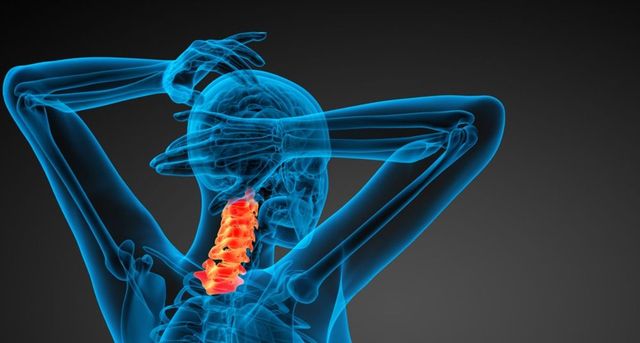Expert Advice for Visiting a Chiropractor for the First Time
Wiki Article
Recognizing Spinal Decompression: A Comprehensive Overview for Optimal Back Health
Spinal decompression is a crucial healing strategy intended at improving back health. It targets pressure alleviation on spinal discs and nerves, cultivating far better placement and minimizing discomfort. Different techniques exist, each serving distinct needs. Understanding that can gain from these treatments is necessary. As back concerns become significantly usual, discovering the nuances of spinal decompression could give useful understandings into preserving a healthy spine. What details techniques and advantages await those happy to find out more?What Is Spinal Decompression?
Spinal decompression describes a restorative method focused on alleviating stress on the spinal discs and surrounding structures. This approach includes the application of controlled grip to the spine, which aids to create space in between the vertebrae. By doing so, it can eliminate nerve compression and promote far better spinal alignment.Spinal decompression can be executed using various approaches, consisting of mechanical tools, manual control, or specialized tables designed to promote the process - Spinal Decompression. The technique aims to recover the natural curvature of the spine while enhancing circulation to the impacted locations, which might contribute to recovery
Clients seeking spinal decompression frequently experience signs and symptoms such as pain in the back, sciatic nerve pain, or herniated discs. This approach is typically considered a non-invasive alternative for those discovering options to surgical procedure or medicine. Comprehending the technicians and objectives of spinal decompression is crucial for evaluating its relevance as a healing method.
Advantages of Spinal Decompression

Furthermore, spinal decompression might boost stance and spinal alignment, adding to total bone and joint health. People typically report raised wheelchair and versatility, enabling a much more energetic lifestyle. By relieving nerve compression, spinal decompression can decrease the threat of persistent conditions and future injuries, improving lasting well-being.
Techniques of Spinal Decompression
Decompression treatment encompasses different approaches developed to alleviate stress on the spine and advertise healing. One usual technique is spinal decompression therapy, which makes use of a motorized grip table to delicately stretch the spine. This approach intends to develop negative pressure within the discs, assisting in the retraction of protruding or herniated discs.Another technique is hand-operated spinal decompression, where skilled practitioners apply hands-on techniques to by hand readjust the spine and minimize tension. Chiropractic care modifications also work as a form of spinal decompression, utilizing certain manipulations to recover appropriate positioning.

That Can Profit From Spinal Decompression?
That can really take advantage of spinal decompression therapy? This therapy is especially beneficial for people experiencing chronic neck and back pain, herniated discs, sciatica, and degenerative disc condition - Top Chiropractor. Patients experiencing nerve compression, which can bring about tingling or weak point in read more the limbs, might also discover relief via this non-surgical treatment. Additionally, those who have not responded well to standard pain management strategies or physical therapy typically transform to spinal decompression as a practical choice. People seeking to boost their total spinal health and boost flexibility can benefit from this therapy, as it intends to relieve pressure on the vertebrae and spinal discs. It is important, nonetheless, for prospective prospects to seek advice from healthcare experts to determine if spinal decompression appropriates for their details conditions and demands. This tailored method warranties that the therapy is used effectively for the very best results and boosted top quality of life
Tips for Keeping a Healthy Spine
Preserving a healthy spine is crucial for total well-being, as it sustains the body's structure and function. To advertise spinal health, individuals must prioritize normal exercise, concentrating on exercises that strengthen core muscular tissues, enhance flexibility, and enhance stance. Integrating tasks such as yoga, swimming, or Pilates can be specifically valuable.Furthermore, keeping a healthy weight lessens undue anxiety on the spine. Ergonomic modifications in the office and appropriate training methods can additionally avoid injuries. It is essential to exercise good pose while resting, standing, and resting, making certain that the spine keeps its all-natural curvature.
Routine check-ups with medical care experts can help in determining prospective issues at an early stage. Remaining hydrated and eating a balanced diet regimen rich in minerals and vitamins supports total spinal health. Ultimately, an aggressive strategy to spine treatment can bring about improved mobility and a much better lifestyle.
Often Asked Questions
How Long Does a Regular Spinal Decompression Session Last?
A common spinal decompression session usually lasts between 30 to 45 mins. Patients typically undergo several sessions over numerous weeks, depending on their details problem and treatment strategy developed by their healthcare company.Are There Any Negative Effects of Spinal Decompression Therapy?
Spinal decompression treatment might cause mild negative effects, such as momentary pain, muscular tissue convulsions, or pain. Severe issues are rare, and most people experience alleviation from signs after treatment.Can Spinal Decompression Be Performed in the house?
Spinal decompression can be done in your home using customized devices or techniques, such as inversion tables or extending workouts. Speaking with a healthcare professional prior to attempting home therapy is a good idea to ensure safety and security and effectiveness.The Amount Of Sessions Are Usually Required for Efficient Results?
Normally, individuals need between 15 to 30 sessions of spinal decompression therapy for efficient results. The exact number might differ based on personal problems, therapy goals, and the seriousness of back problems experienced.What Credentials Should a Practitioner Have for Spinal Decompression?
A specialist for spinal decompression ought to possess pertinent certifications such as an accredited chiropractic physician or physiotherapist certification, in addition to specialized training in spinal decompression strategies to guarantee secure and reliable treatment for individuals.Spinal decompression refers to a healing strategy intended at reducing pressure on the spinal discs and surrounding structures. Additionally, spinal decompression might enhance stance and spinal positioning, adding to total bone and joint health. One usual technique is spinal decompression treatment, which utilizes a motorized grip table to delicately stretch the spine. Physical treatment exercises are important in promoting spinal decompression as they strengthen core muscle mass, giving much better assistance for the spine. People looking for to improve their overall spinal health and improve movement can profit from this treatment, as it aims to reduce pressure on the vertebrae and spinal discs.
Report this wiki page